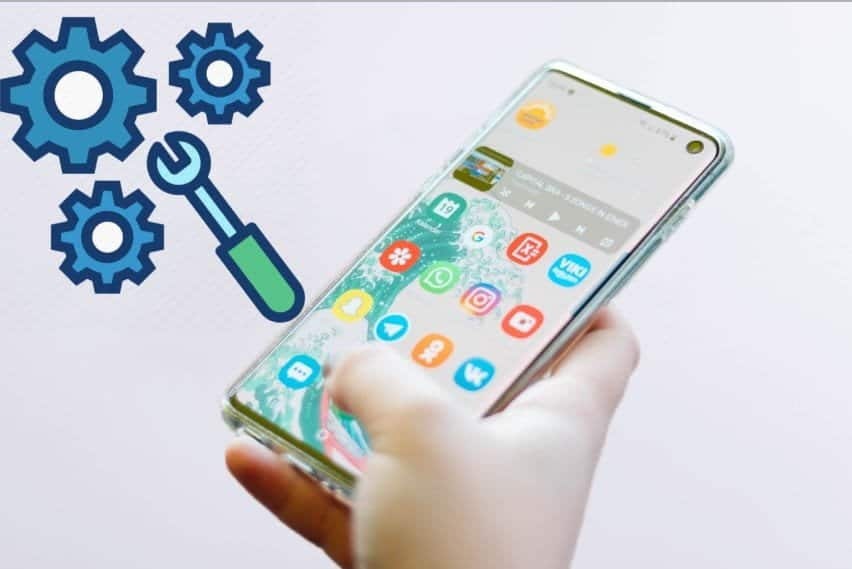The Android 12 operating system has been around since October 2021. However, some bugs and issues persist today. Users are experiencing network connection problems, excessive battery drain, and crashing apps.
Even subsequent releases do not fix the issues. It’s more prevalent on the Pixel 6, OnePlus 9, Samsung Z Fold 3, and other high-end smartphones.
Some issues have been present even in older versions. Unfortunately, these common Android problems are hard to disassociate with the OS.
Do you want to know how to fix the most common issues? Keep reading to learn more:
Slow User Interface
Slow performance issues plague the Android community. These can be due to various causes, meaning troubleshooting may take a while. If the apps are sluggish and the interface often lags, you can try a few steps to see if they solve your problem.
Troubleshooting the Issue
First, try restarting your device to solve the issue of overloading. This step closes all apps and flushes the memory, which may speed up your phone.
The storage space might also be a problem. You may start having issues when it goes down to 10%. To solve it, remove any unused apps and move your photos to another storage solution.
Clear your cache, too. Your apps and browser store data in your phone every time you use them. Removing them can free up valuable storage space.
If these steps never solve the issues, your phone may not have the latest version of the OS. Updating solves many Android problems and bugs. Check your Settings to check whether a download is available.
Virus and Malware
When infected with a virus, your Android phone may exhibit unusual acts. Apps may load slowly, data usage is higher than usual, and new software might appear out of nowhere.
The most common malware for Android phones is adware. It accounts for 48% of all cases.
It displays ads everywhere, no matter the app. Sometimes, the adware changes your homepage to that of an advertising website.
You can get malware from installing suspicious apps and malicious websites. Other types you should watch out for are:
- Ransomware
- Spyware
- Backdoor
- Universal Cross-Site Scripting (UXSS) Attack
- Scareware
Sometimes, users never notice their Android phone has an infection. Hackers can then access their devices any time they please, such as the case with spyware and backdoor viruses.
Removing Malware
If you suspect your phone has malware, disconnect it from the internet and reboot it to safe mode. The steps may vary depending on your device model. In general, though, you can press and hold the power button until the option appears.
You will see the safe mode indicator at the bottom after it boots up. The home page may also look different, and widgets will be missing.
Now you can uninstall suspicious apps. Open Settings and navigate to Apps & notifications to view the list of all installed software on your phone. You can remove the unwanted ones from here, too.
If you find an unremovable app, it might be the culprit. You can disable and remove its admin privileges. It allows you to uninstall it.
You may have to reset your browser settings to remove pop-up ads. Clear your downloads from your smartphone, as well.
Sometimes, removing malware is not as straightforward. Before paying for ad removal services, try hard resetting your phone first. It usually solves the problem, but you might lose some data.
Excessive Battery Drain
Battery life is never enough for all smartphones. However, an excessive discharge rate is a serious issue. It’s one of the most common Android 12 problems.
Make sure you’re not playing games and watching videos more than usual. These two activities have high power consumption, which can cause unusually-low Android battery life.
Settings
Have you turned on the Always-on feature? If you want to preserve your battery life, consider turning it off. It reduces the demand on your battery while you wait for a fix on the new Android 12 update.
You may also have to tweak some settings, like turning on the adaptive battery and using the battery saver feature. Lowering the brightness of your screen could save some juice, as well.
Virus
The issue may also be malware. It often installs software in your phone that continuously runs in the background, consuming too much of your battery. The only way to resolve your battery issue is to get rid of the malicious software.
Old Battery
Sometimes, the issue is the battery’s age. Fortunately, the solution is to replace it. You may have to go to Android repair shops, such as Bulldogmobilerepair.com.
Google Play Store Issues
Android users often experience numerous Google Play issues below. We will discuss ways to fix these problems before calling an expert to help.
Crashing
Cache issues often cause the Google Play Store app to crash. Go to Settings and look for it under Apps & notifications. Navigate to Storage & Cache and tap Clear Storage to clear the cache.
Restart your phone after finishing these steps. It should fix the issue. Otherwise, consider using Google to find a reputable repair shop. Type in “fix my Android” to get a list of nearby establishments.
Missing App
The Google Play Store app could sometimes disappear. However, you can never delete it without rooting your device. You likely disabled it accidentally.
Go to Apps & notifications and look at your applications. Choose Disabled Apps located on the dropdown menu at the top.
Check whether the app is here. If it appears on the list, tap Enable to activate Google Play Store again.
Learn More Android Problems and How to Troubleshoot Them
Android problems are never going away due to their complex nature. The good news is users can fix minor issues themselves most of the time. For Android coding problems, you need professional help.
Did you find this guide helpful? For more tips, read our other blog posts today.
